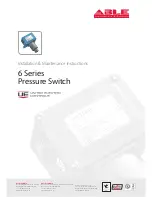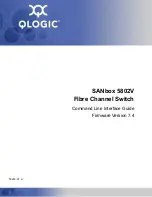
1-3
Built-in security
IPv6 uses IPsec as its standard extension header to provide end-to-end security. This feature provides
a standard for network security solutions and enhances the interoperability between different IPv6
applications.
QoS support
The Flow Label field in the IPv6 header allows the device to label packets of a flow and provide special
handling for these packets.
Enhanced neighbor discovery mechanism
The IPv6 neighbor discovery protocol is implemented through a group of Internet Control Message
Protocol Version 6 (ICMPv6) messages that manage the information exchange between neighbor
nodes on the same link. The group of ICMPv6 messages takes the place of Address Resolution
Protocol (ARP) messages, Internet Control Message Protocol version 4 (ICMPv4) router discovery
messages, and ICMPv4 redirection messages and provides a series of other functions.
Flexible extension headers
IPv6 cancels the Options field in the IPv4 header but introduces multiple extension headers to provide
scalability while improving efficiency. The Options field contains 40 bytes at most, while the size of IPv6
extension headers is restricted to the maximum size of IPv6 packets.
Introduction to IPv6 Address
IPv6 address format
An IPv6 address is represented as a set of 16-bit hexadecimals, separated by colons. An IPv6 address
is divided into eight groups, and the 16 bits of each group are represented by four hexadecimal
numbers, for example, 2001:0000:130F:0000:0000:09C0:876A:130B.
To simplify the representation of IPv6 addresses, zeros in IPv6 addresses can be handled as follows:
z
Leading zeros in each group can be removed. For example, the above-mentioned address can be
represented in a shorter format as 2001:0:130F:0:0:9C0:876A:130B.
z
If an IPv6 address contains two or more consecutive groups of zeros, they can be replaced by a
double-colon ::. For example, the above-mentioned address can be represented in the shortest
format as 2001:0:130F::9C0:876A:130B.
A double-colon can be used only once in an IPv6 address. Otherwise, the device is unable to determine
how many zeros that double-colons represent when converting them to zeros to restore a 128-bit IPv6
address.
An IPv6 address consists of two parts: address prefix and interface ID. The address prefix and the
interface ID are respectively equivalent to the network ID and the host ID in an IPv4 address.
Содержание S7906E - Switch
Страница 82: ...1 4 DeviceA interface tunnel 1 DeviceA Tunnel1 service loopback group 1...
Страница 200: ...1 11 DeviceB display vlan dynamic No dynamic vlans exist...
Страница 494: ...ii Displaying and Maintaining Tunneling Configuration 1 45 Troubleshooting Tunneling Configuration 1 45...
Страница 598: ...ii...
Страница 1757: ...4 9...
Страница 1770: ...6 4...
Страница 2017: ...2 11 Figure 2 3 SFTP client interface...
Страница 2062: ...i Table of Contents 1 URPF Configuration 1 1 URPF Overview 1 1 What is URPF 1 1 How URPF Works 1 1 Configuring URPF 1 2...
Страница 2238: ...1 16 DeviceA cfd linktrace service instance 1 mep 1001 target mep 4002...
Страница 2442: ...2 4 Set the interval for sending Syslog or trap messages to 20 seconds Device mac address information interval 20...
















































